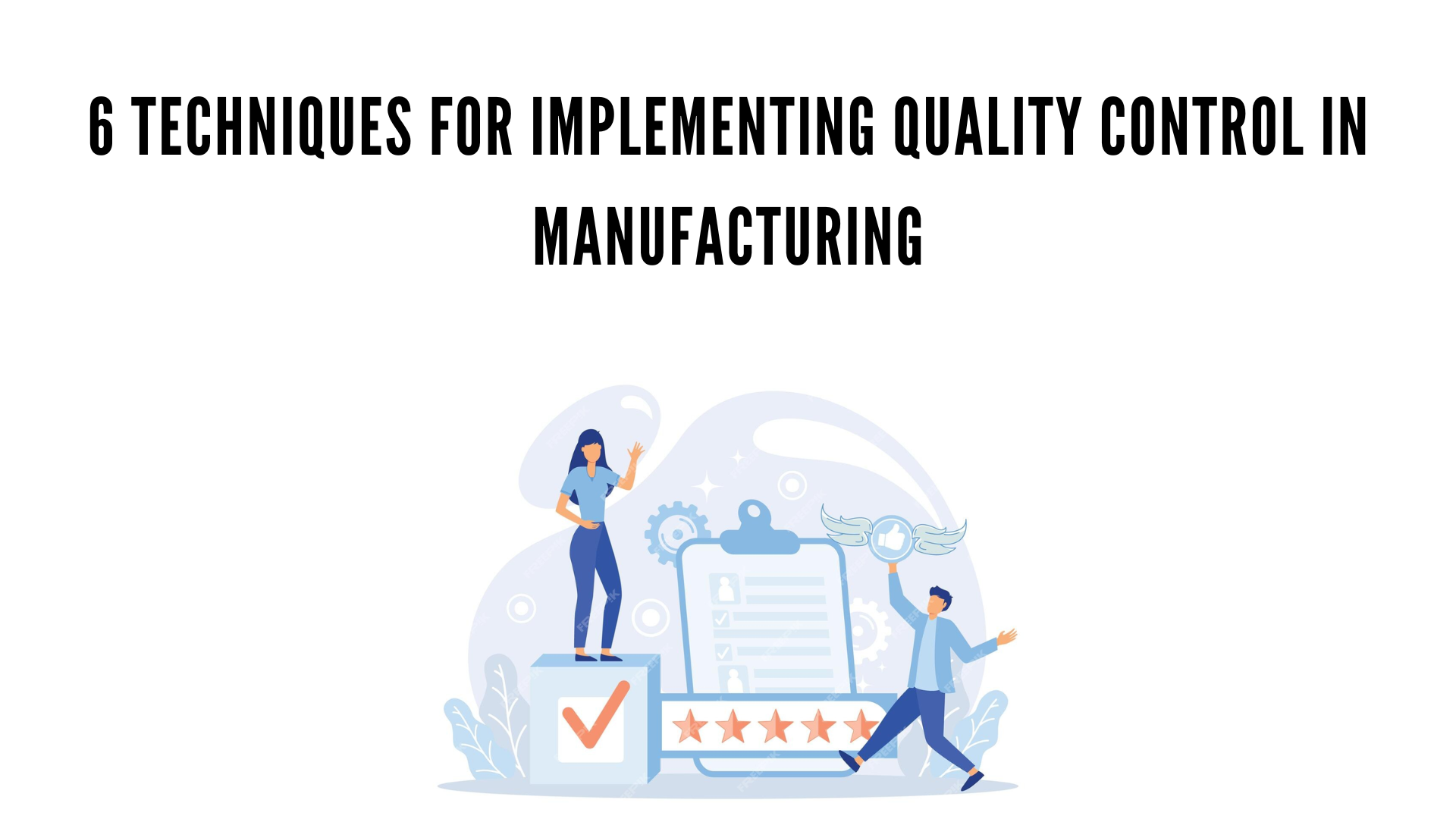In the highly competitive world of manufacturing, quality control is not just a checkpoint but a strategic imperative. Delivering products that consistently meet or exceed customer expectations requires a robust quality control system. Effective quality control not only ensures product reliability but also enhances brand reputation, reduces costs, and minimizes waste.
Let’s explore six proven techniques to implement and elevate quality control in your manufacturing process.
1. Statistical Process Control (SPC)
Statistical Process Control is a method that uses statistical techniques to monitor and control the quality of manufacturing processes. By collecting data at various stages of production and analyzing it using statistical tools, manufacturers can identify variations and address them before they lead to defects.
- Control Charts: These are graphical tools that show how a process varies over time. They help in distinguishing between common cause variations (natural variations) and special cause variations (indicative of problems in the process).
- Process Capability Analysis: This analysis measures how well a process can produce products within specified limits. It’s crucial for assessing whether a process is capable of consistently meeting quality standards.
Implementation Tip: Regularly train your team on SPC tools and ensure data collection is accurate and consistent. Use software tools to automate data collection and analysis for more efficient monitoring.
2. Total Quality Management (TQM)
Total Quality Management is a holistic approach that focuses on continuous improvement in all aspects of an organization. TQM involves everyone in the organization, from top management to the shop floor workers, in the pursuit of quality excellence.
- Customer Focus: Understand and meet the needs of your customers. Customer feedback is crucial in defining quality standards and identifying areas for improvement.
- Employee Involvement: Encourage a culture where employees at all levels are involved in quality initiatives. This can be achieved through regular training, suggestion programs, and quality circles.
Implementation Tip: Foster a culture of continuous improvement by setting up cross-functional teams to address quality issues and drive process improvements. Recognize and reward employees for their contributions to quality improvements.
3. Six Sigma
Six Sigma is a data-driven approach aimed at reducing defects and improving quality by identifying and removing causes of variation. The goal of Six Sigma is to achieve near-perfect quality, with a defect rate of less than 3.4 per million opportunities.
- DMAIC Framework: This framework (Define, Measure, Analyze, Improve, Control) is used for improving existing processes. It provides a structured method for solving problems and improving processes.
- Belt System: Six Sigma practitioners are often categorized by a belt system (Yellow Belt, Green Belt, Black Belt, etc.), indicating their level of expertise and involvement in quality initiatives.
Implementation Tip: Start by training key employees in Six Sigma principles and methodologies. Focus on small projects that can deliver quick wins and build momentum for broader Six Sigma initiatives.
4. Lean Manufacturing
Lean Manufacturing focuses on minimizing waste and maximizing value for the customer. By streamlining production processes and eliminating non-value-added activities, Lean helps in improving efficiency and quality.
- 5S System: This system (Sort, Set in order, Shine, Standardize, Sustain) helps in organizing the workplace to improve efficiency and reduce waste.
- Value Stream Mapping: This tool helps in visualizing and analyzing the flow of materials and information required to bring a product to the customer. It’s instrumental in identifying waste and areas for improvement.
Implementation Tip: Conduct regular 5S audits to maintain a clean and organized workspace. Use value stream mapping to pinpoint bottlenecks and streamline your production processes for better quality and efficiency.
5. Automated Quality Inspection
Advancements in technology have made it possible to integrate automation into quality control processes. Automated quality inspection systems use technologies like machine vision and artificial intelligence to perform precise and consistent inspections.
- Machine Vision Systems: These systems use cameras and image processing software to inspect products for defects. They can measure dimensions, detect surface defects, and verify the presence of components.
- Robotic Inspection: Robots equipped with sensors and cameras can perform repetitive inspection tasks with high accuracy and consistency.
Implementation Tip: Invest in automated inspection technologies that can be easily integrated into your production line. Regularly update and maintain these systems to keep up with evolving quality standards.
6. Supplier Quality Management (SQM)
Quality control extends beyond the factory floor. Managing the quality of components and materials from suppliers is crucial for maintaining overall product quality.
- Supplier Audits: Regularly audit your suppliers to ensure they meet your quality standards. This involves assessing their production processes, quality control systems, and compliance with regulatory requirements.
- Supplier Scorecards: Use scorecards to evaluate supplier performance based on metrics like defect rates, on-time delivery, and responsiveness. This helps in identifying and working with high-quality suppliers.
Implementation Tip: Establish clear quality expectations and communication channels with your suppliers. Develop collaborative relationships and work together on continuous improvement initiatives.
Conclusion
Implementing effective quality control in manufacturing requires a combination of strategic planning, continuous improvement, and the right tools and techniques. By adopting these six techniques—Statistical Process Control, Total Quality Management, Six Sigma, Lean Manufacturing, Automated Quality Inspection, and Supplier Quality Management—you can build a robust quality control system that drives excellence, reduces costs, and enhances customer satisfaction.
Remember, quality control is not a one-time effort but a continuous journey. Stay committed to fostering a culture of quality, and you’ll see the benefits in your products, processes, and customer relationships.









